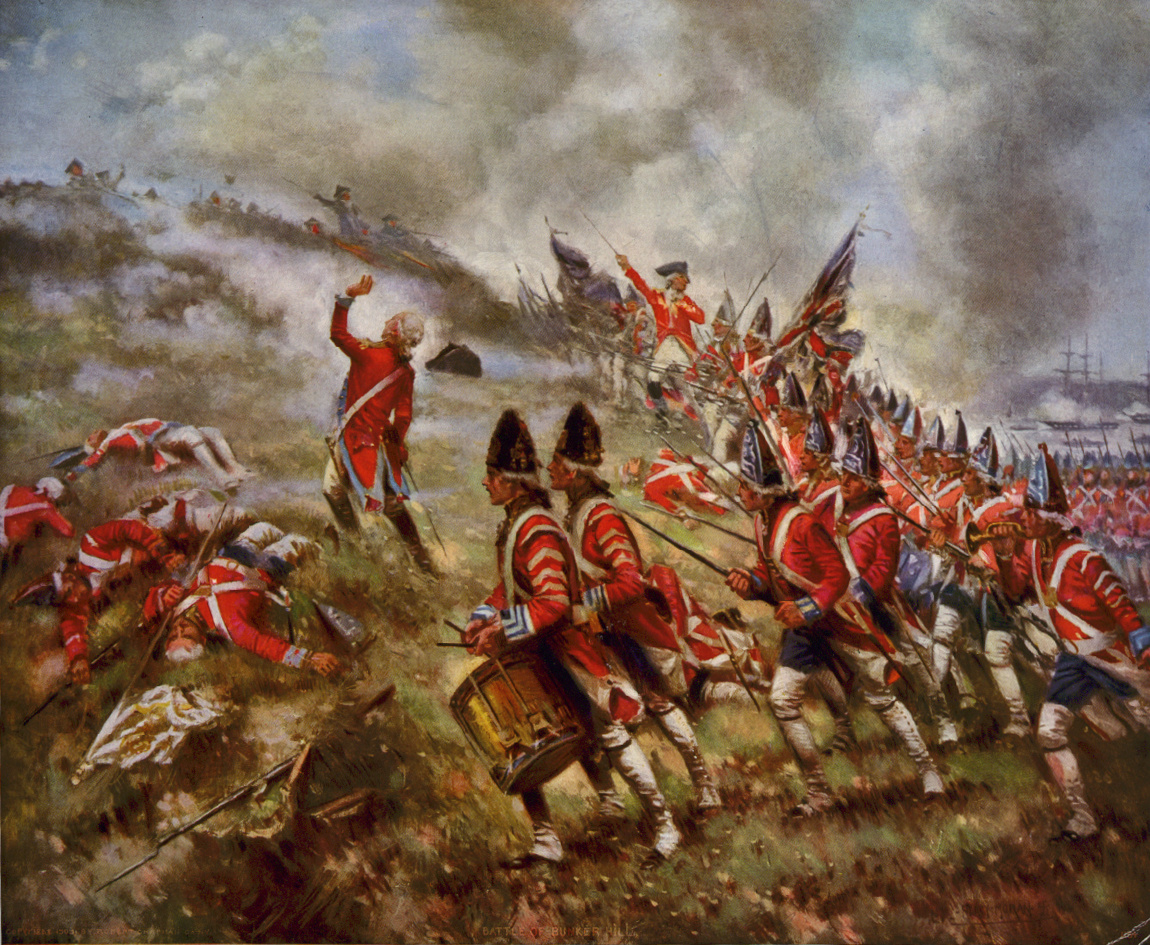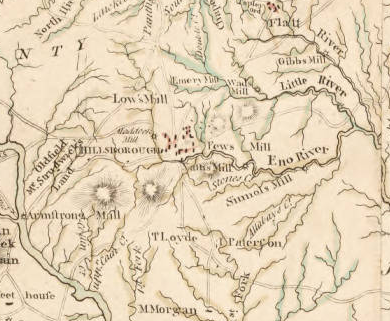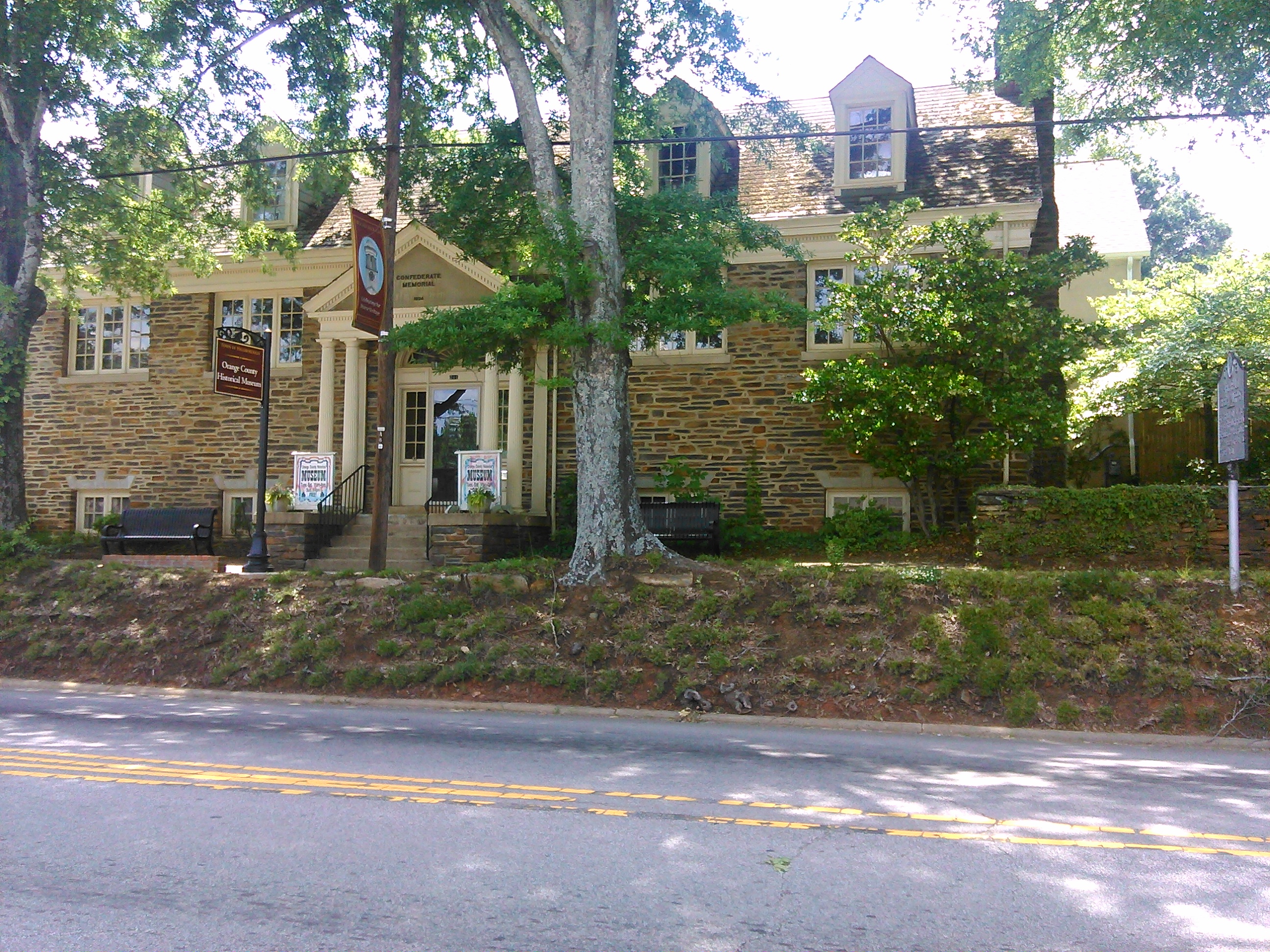|
Edmund Fanning (colonial Administrator)
Edmund Fanning (April 24, 1739 – February 28, 1818) was an American-born colonial administrator and military officer. Born in New York, he became a lawyer and politician in North Carolina in the 1760s. He first came to fame as the focus of hatred of the Regulators, and led anti-Regulator militia in the War of the Regulation. When the American Revolutionary War broke out, he was driven from his home in New York, and joined the British Army, recruiting other Loyalists. He served during campaigns in New England and the South. At the end of the war in 1783 he became a United Empire Loyalist, settling in Nova Scotia. Fanning was appointed lieutenant governor of Nova Scotia not long after his arrival, and helped oversee the resettlement of other Loyalist refugees in the province. In 1786 he was appointed lieutenant governor of Saint John's Island, which was renamed Prince Edward Island during his tenure. He served in that post until 1813. He retired to London, where he d ... [...More Info...] [...Related Items...] OR: [Wikipedia] [Google] [Baidu] |
Nova Scotia
Nova Scotia is a Provinces and territories of Canada, province of Canada, located on its east coast. It is one of the three Maritime Canada, Maritime provinces and Population of Canada by province and territory, most populous province in Atlantic Canada, with an estimated population of over 1 million as of 2024; it is also the second-most densely populated province in Canada, and second-smallest province by area. The province comprises the Nova Scotia peninsula and Cape Breton Island, as well as 3,800 other coastal islands. The province is connected to the rest of Canada by the Isthmus of Chignecto, on which the province's land border with New Brunswick is located. Nova Scotia's Capital city, capital and largest municipality is Halifax, Nova Scotia, Halifax, which is home to over 45% of the province's population as of the 2021 Canadian census, 2021 census. Halifax is the List of census metropolitan areas and agglomerations in Canada, twelfth-largest census metropolitan area in ... [...More Info...] [...Related Items...] OR: [Wikipedia] [Google] [Baidu] |
United Empire Loyalist
United Empire Loyalist (UEL; or simply Loyalist) is an honorific title which was first given by the 1st Lord Dorchester, the governor of Quebec and governor general of the Canadas, to American Loyalists who resettled in British North America during or after the American Revolution. At that time, the demonym ''Canadian'' or ''Canadien'' was used by the descendants of New France settlers inhabiting the Province of Quebec. They settled primarily in Nova Scotia and the Province of Quebec. The influx of loyalist settlers resulted in the creation of several new colonies. In 1784, New Brunswick was partitioned from the Colony of Nova Scotia after significant loyalist resettlement around the Bay of Fundy. The influx of loyalist refugees also resulted in the Province of Quebec's division into Lower Canada (present-day Quebec), and Upper Canada (present-day Ontario) in 1791. The Crown gave them land grants of one lot. One lot consisted of per person to encourage their resettle ... [...More Info...] [...Related Items...] OR: [Wikipedia] [Google] [Baidu] |
William Howe, 5th Viscount Howe
William Howe, 5th Viscount Howe, (10 August 1729 – 12 July 1814), was a British Army officer who rose to become Commander-in-Chief of British land forces in the Colonies during the American War of Independence. Howe was one of three brothers who had distinguished military careers. In historiography of the American war he is usually referred to as Sir William Howe to distinguish him from his brother Richard, who was 4th Viscount Howe at that time. Having joined the army in 1746, Howe saw extensive service in the War of the Austrian Succession and Seven Years' War. He became known for his role in the capture of Quebec in 1759 when he led a British force to capture the cliffs at Anse-au-Foulon, allowing James Wolfe to land his army and engage the French in the Battle of the Plains of Abraham. Howe also participated in the campaigns to take Louisbourg, Belle Île and Havana. He was appointed Lieutenant-Governor of the Isle of Wight, a post he held until 1795. Howe was sent ... [...More Info...] [...Related Items...] OR: [Wikipedia] [Google] [Baidu] |
Sandy Creek Baptist Militia
Sandy may refer to: People and fictional characters *Sandy (given name), including a list of people and fictional characters with the given name or nickname * Sandy (surname), a list of people * Sandy (Iranian music band), Iranian singer, composer, arranger, and keyboard player *Sandy (Brazilian singer), Brazilian singer and actress Sandy Leah Lima (born 1983) * Sandy (Egyptian singer), Arabic singer Sandy Adel Ahmed Hussein (born 1986) * (Sandy) Alex G, a former stage name of American singer-songwriter and multi-instrumentalist Alexander Giannascoli (born 1993) * Sandy Mitchell, pen name of British writer Alex Stewart Places * Sandy, Bedfordshire, England, a market town and civil parish ** Sandy railway station * Sandy, Carmarthenshire, Wales * Sandy, Florida, an unincorporated area in Manatee County * Sandy, Oregon, a city * Sandy, Pennsylvania, a census-designated place * Sandy, Utah, a city * Sandy, Kanawha County, West Virginia, an unincorporated community * Sandy ... [...More Info...] [...Related Items...] OR: [Wikipedia] [Google] [Baidu] |
Francis Nash
Francis Nash (October 7, 1777) was a brigadier general (United States), brigadier general in the Continental Army during the American Revolutionary War. Prior to the war, he was a lawyer, public official, and politician in Hillsborough, North Carolina, and was heavily involved in opposing the War of the Regulation, Regulator movement, an uprising of settlers in the North Carolina Piedmont (United States), piedmont between 1765 and 1771. Nash was also involved in North Carolina politics, representing Hillsborough on several occasions in the colonial Province of North Carolina, North Carolina General Assembly. Nash quickly became engaged in revolutionary activities, and served as a delegate to the first three Patriot North Carolina Provincial Congress, provincial congresses. In 1775, he was named lieutenant colonel of the 1st North Carolina Regiment under Colonel James Moore (Continental Army officer), James Moore, and served briefly in the Southern theater of the American Revolu ... [...More Info...] [...Related Items...] OR: [Wikipedia] [Google] [Baidu] |
Regulator Movement
The Regulator Movement in North Carolina, also known as the Regulator Insurrection, War of Regulation, and War of the Regulation, was an uprising in Provincial North Carolina from 1766 to 1771 in which citizens took up arms against colonial officials who they viewed as corrupt. Historians such as John Spencer Bassett argue that the Regulators did not wish to change the form or principle of their government, but simply wanted to make the colony's political process more equal. They wanted better economic conditions for everyone, instead of a system that heavily benefited the colonial officials and their network of plantation owners mainly near the coast. Bassett interprets the events of the late 1760s in Orange and surrounding counties as "...a peasants' rising, a popular upheaval."William A. Link, ''North Carolina: Change and Tradition in a Southern State'' (Wiley, 2018), pp. 88–93, 106. Causes of rebellion Population increase and new settlers arrive The western region of Prov ... [...More Info...] [...Related Items...] OR: [Wikipedia] [Google] [Baidu] |
William Tryon
Lieutenant-General William Tryon (8 June 172927 January 1788) was a British Army officer and colonial administrator who served as governor of North Carolina from 1764 to 1771 and the governor of New York from 1771 to 1777. He also served during the Seven Years' War, the Regulator Movement, and the American War of Independence. Early life and career Tryon was born on 8 June 1729 at the Tryon family's seat at Norbury Park, Surrey, the son of Charles Tryon and Lady Mary Shirley. His maternal grandfather was Robert Shirley, 1st Earl Ferrers. In 1751, Tryon enlisted in the British Army as a lieutenant in the 1st Regiment of Foot Guards and was promoted to the rank of captain later that year. In 1758, Tryon was promoted to lieutenant-colonel. Seven Years' War During the Seven Years' War, Tryon and his regiment were involved in the British raid on Cherbourg. They landed at Cherbourg and destroyed all military facilities. In September, they reembarked for St Malo, where th ... [...More Info...] [...Related Items...] OR: [Wikipedia] [Google] [Baidu] |
Hillsborough, North Carolina
The town of Hillsborough is the county seat of Orange County, North Carolina, United States, and is located along the Eno River. The population was 6,087 in 2010, but it grew rapidly to 9,660 by 2020. Its name was unofficially shortened to "Hillsboro" during the 19th century. In the late 1960s, residents voted to change the name back to its original, historic spelling. History Native American history Local Native American groups had lived in the Hillsborough area for thousands of years by the time Spanish explorers entered the region. The Great Indian Trading Path, used by generations of Native Americans, crossed the Eno River in this area. Historic Siouan-language tribes such as the Occaneechi and the Eno were living in the Hillsborough area at the time of European contact. The English explorer John Lawson recorded visiting "Occaneechi Town" here when he traveled through North Carolina in 1701. The tribes suffered high losses due to new infectious diseases brought by Eu ... [...More Info...] [...Related Items...] OR: [Wikipedia] [Google] [Baidu] |
Yale College
Yale College is the undergraduate college of Yale University. Founded in 1701, it is the original school of the university. Although other Yale schools were founded as early as 1810, all of Yale was officially known as Yale College until 1887, when its schools were collegiate university, confederated and the institution was renamed Yale University. Originally established to train Congregationalist ministers, the college began teaching humanities and natural sciences by the late 18th century. At the same time, students began organizing extracurricular organizations: first College literary societies, literary societies, and later publications, sports teams, and singing groups. By the middle of the 19th century, it was the largest college in the United States. In 1847, it was joined by another undergraduate school at Yale, the Sheffield Scientific School, which was absorbed into the college in 1956. These merged curricula became the basis of the modern-day liberal arts curriculum, ... [...More Info...] [...Related Items...] OR: [Wikipedia] [Google] [Baidu] |
John Parr (governor)
John Parr (20 December 1725, Dublin, Kingdom of Ireland – 25 November 1791, Halifax, Nova Scotia) was a British military officer and governor of Nova Scotia. He was the last Governor of the Colony of Nova Scotia, and first Lieutenant Governor of the Province of Nova Scotia. He is buried in the crypt of St. Paul's Church. Early life and family Parr was born in Dublin, Ireland, to Captain John Parr and Eleanor Clements, as part of the Anglo-Irish aristocracy that had settled on the island during the 17th century. His mother Eleanor was the daughter of David Clements, of Rath Kenny, County Cavan, Ireland. His sister, Rachel Parr, married John Clements, who was the brother of Rt. Honorable Nathaniel Clements. His father fought at the battle of the Boyne, and won distinction at Blenheim, Marlborough's greatest victory. Through his father's line, the family claimed direct descent from Lord Parr, Baron Kendal, who was a well-known nobleman, in the north of England, in the rei ... [...More Info...] [...Related Items...] OR: [Wikipedia] [Google] [Baidu] |
Long Island
Long Island is a densely populated continental island in southeastern New York (state), New York state, extending into the Atlantic Ocean. It constitutes a significant share of the New York metropolitan area in both population and land area. The island extends from New York Harbor eastward into the ocean with a maximum north–south width of . With a land area of , it is the List of islands of the United States by area, largest island in the contiguous United States. Long Island is divided among four List of counties in New York, counties, with Brooklyn, Kings (Brooklyn), Queens, and Nassau County, New York, Nassau counties occupying its western third and Suffolk County, New York, Suffolk County its eastern two-thirds. It is an ongoing topic of debate whether or not Brooklyn and Queens are considered part of Long Island. Geographically, both Kings and Queens county are located on the Island, but some argue they are culturally separate from Long Island. Long Island may ref ... [...More Info...] [...Related Items...] OR: [Wikipedia] [Google] [Baidu] |
Southold, New York
The Town of Southold is one of ten towns in Suffolk County, New York, United States. It is located in the northeastern tip of the county, on the North Fork of Long Island. The population was 23,732 at the 2020 census. The town contains a hamlet, also named Southold, which was settled in 1640. History Algonquian-speaking tribes, related to those in New England across Long Island Sound, lived in eastern Long Island before European colonization. The western portion of the island was inhabited by bands of Lenape, whose language was also one of the Algonquian languages. In surrounding areas, the Dutch colonists had established early settlements to the northwest: on the upper Hudson River was Fort Orange, founded in 1615 (later renamed Albany by the English); and New Amsterdam (later renamed Manhattan) in 1625. Lion Gardiner established a manor on Gardiners Island in East Hampton in 1639. Just across from Long Island, the Connecticut Colony, or Connecticut River Colony, was ... [...More Info...] [...Related Items...] OR: [Wikipedia] [Google] [Baidu] |








